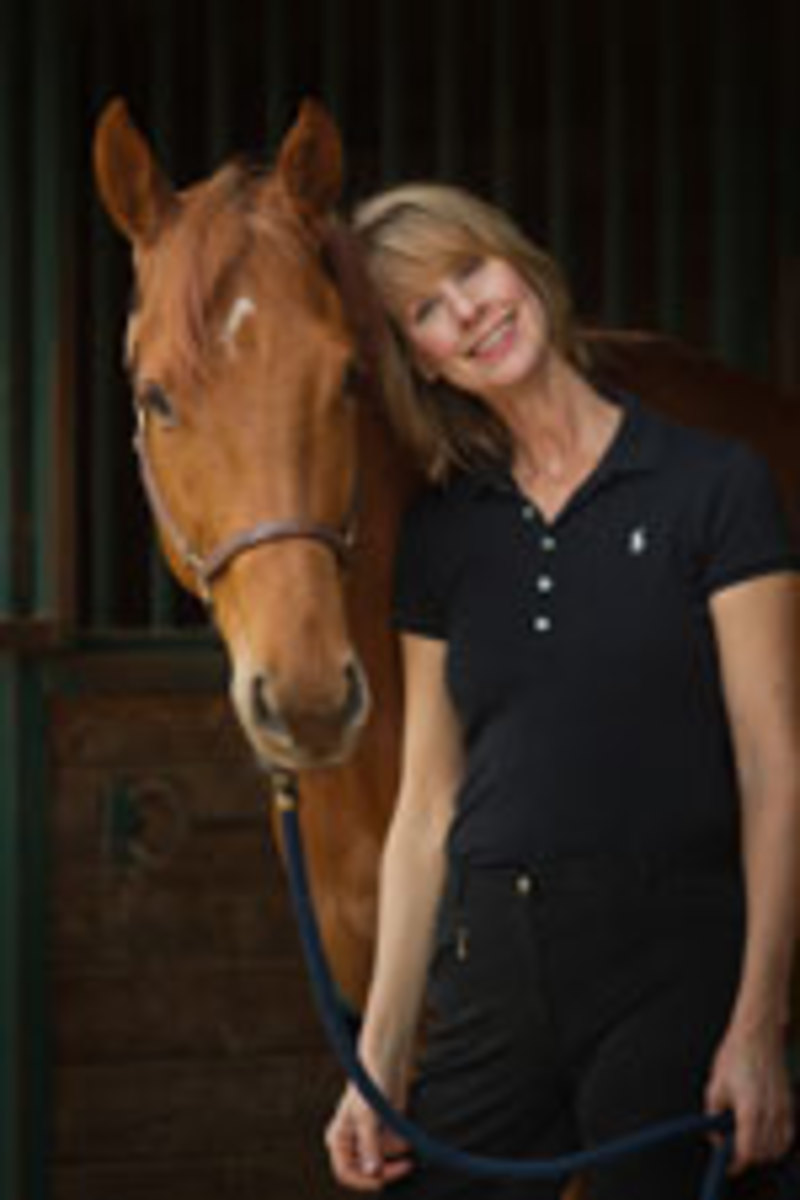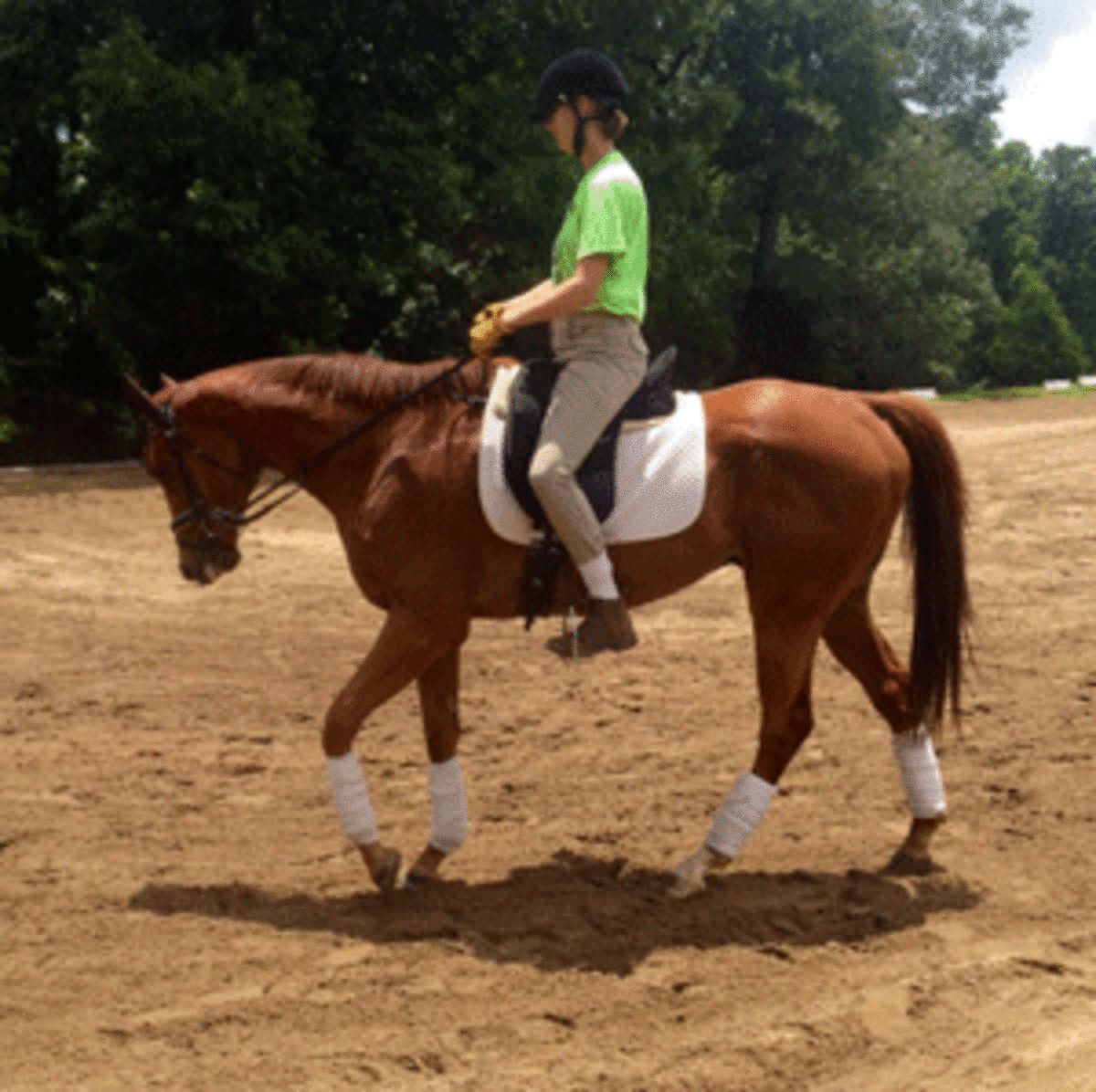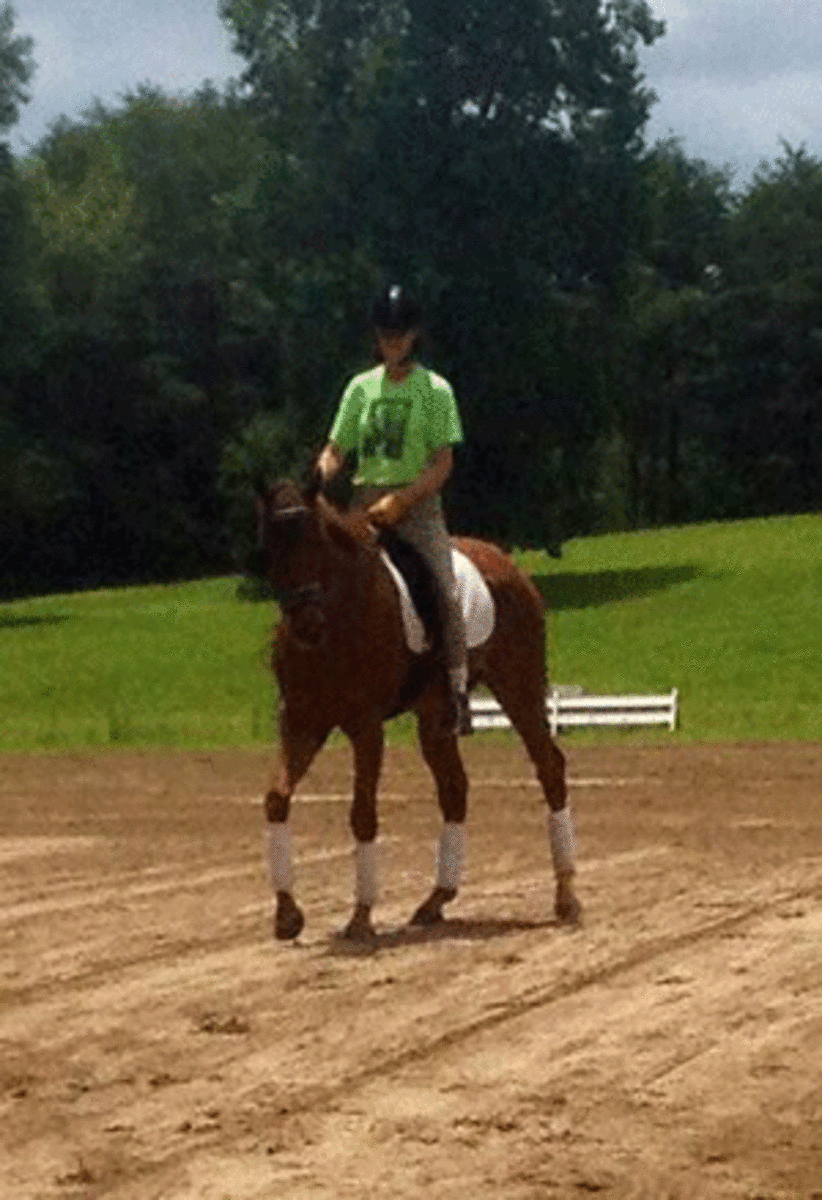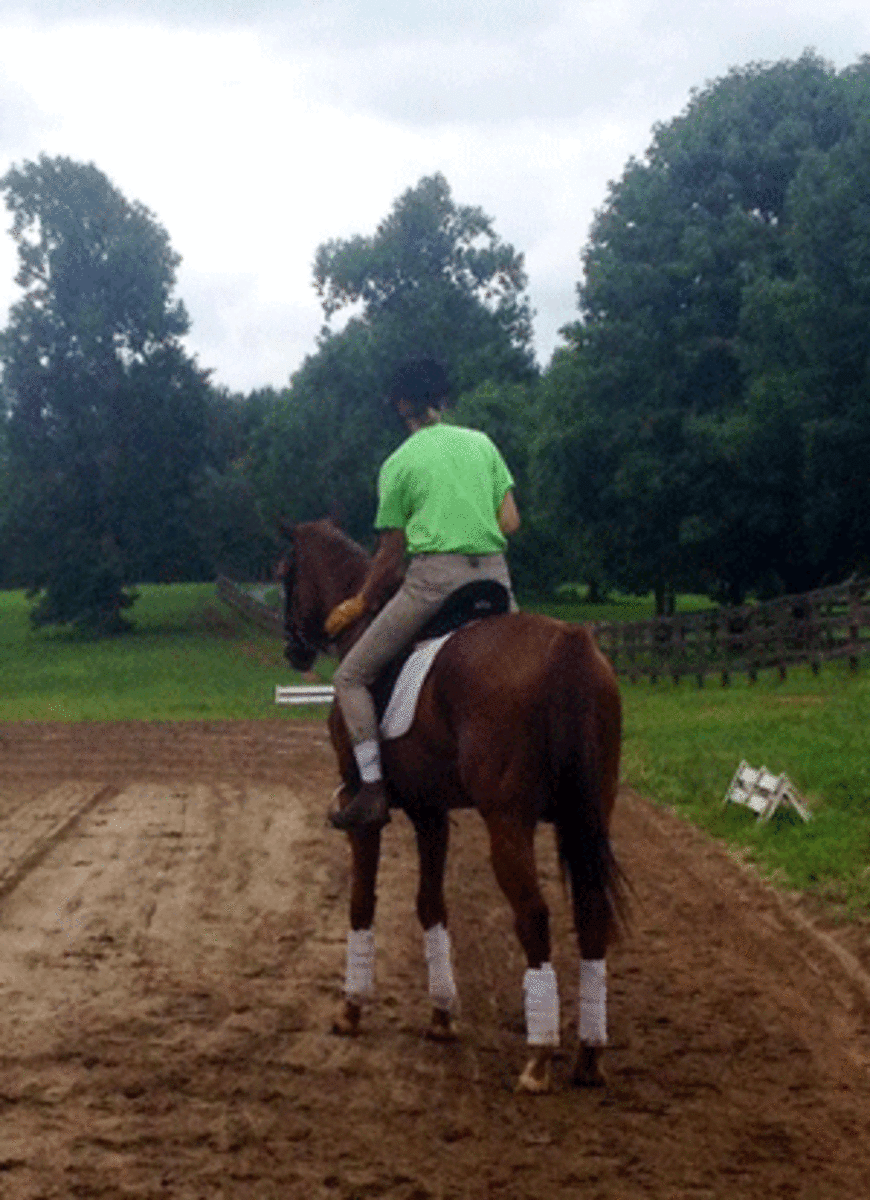There’s several different approaches to re-starting an OTTB, so I am told (and have read). Some riders give their horse a few months of downtime, as I did with Forrest, while others say, perhaps from experience, “Look, the horse has been in work, is used to having a job, they don’t need downtime, just get on and ride.“

To the latter, I reply, with all due respect, “What are you, nuts?”
Honestly, I take my hat off to anyone who just climbs aboard their new OTTB, still possibly metabolizing steroids and 14-pounds of grain per day, and heads out into the fields and woods for a trail ride. Personally, I am waaaay too anal (aka “a dressage rider”) to go that route. Plus, as you can see from the photos posted in my blog, my arena is open and I really, really, really, don’t want to risk Forrest bolting out of my arena at this point.

First of all, I don’t have a current passport that will clear us as we, still galloping, approach Canada, and secondly, we could both get seriously injured, so I am simply riding Forrest as if he is being backed for the first time. I’ll keep the arena as it is, open, because sometimes, either a student or myself, needs to motivate a phlegmatic horse that is chronically behind the leg and this arena proves useful when I bark, “Gallop down the long side, leave the arena, hand gallop up the hill, turn and come back into the arena, land in trot, GIVE, then ride that big, dynamic trot!”
But basically, only the riders who are gutsy enough to take an OTTB, fresh off the track, on a trail ride, are gutsy enough to say, “You betcha!” and take off with alacrity. The others, who have only ridden dressage, tend to look at me as if I’ve just grown a second head out of my arm.
Even my sister, an avid fox hunter in her day, says of my chosen relaxed schedule with Forrest, “Well, it isn’t like he hasn’t been ridden before!”
Right. But he has also never felt a 36″ inseam down either side of his ribcage and neither has he lived down south with neighbors shooting off fireworks, not only on the Fourth of July, but for a week prior and afterwards. Lordy, and deer hunting season is merely a couple of months away, which will mean Forrest and I will be subjected to, “Ka-BLAM!” ad nauseam, from sun-up to sun-down.
So these are my excuses for taking it slow. Our following ride, after our first successful mount up and short jaunt, was simply walking, checking the brakes, steering, and riding him into a light contact, focusing on keeping his jaw soft and chewing.

A word about that: normally, when I back a horse, the last thing I do is ride them into any sort of outline at the walk, because I was trained that nothing destroys the walk more than doing that. Generally, I keep a steady rein, but quite a long one, and pick up the reins further as I go into trot, but again, this is the first OTTB I’ve re-started, so better safe than sorry. On one hand, it’s a valid point that, when a jockey takes a hold of a racehorse, that’s the horse’s cue to make a move/charge, so riders re-starting OTTBs should ride on a looped rein, at first. However, I have to say that, for me, longeing Forrest for the first eight weeks, in side reins, has him now quite used to working into a connection, so I feel comfortable riding him carefully on the bit at the walk and, when we begin trotting, next week.
Am I taking it too slow with Forrest? Maybe. But wasn’t it Balkenhol (or an equally impressive classical master) that said, “You will progress faster by taking it slower!”












